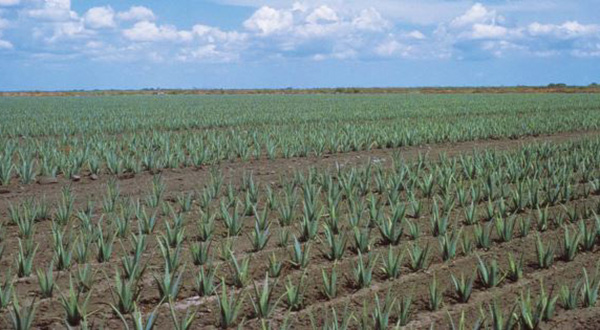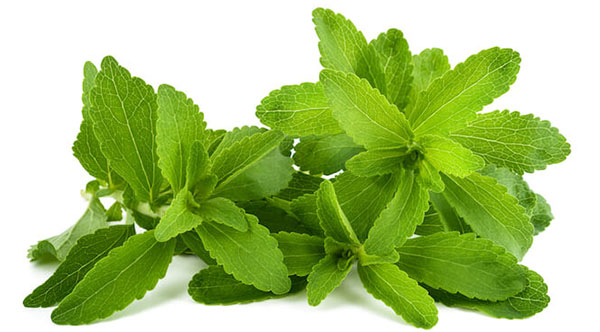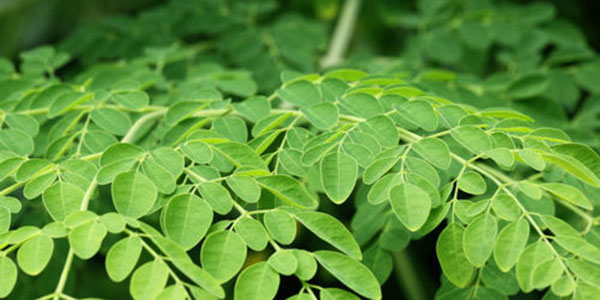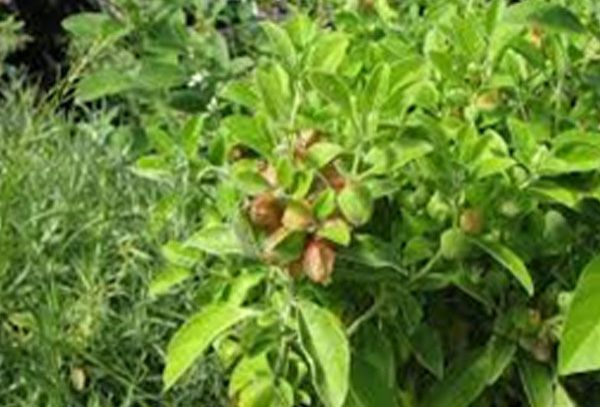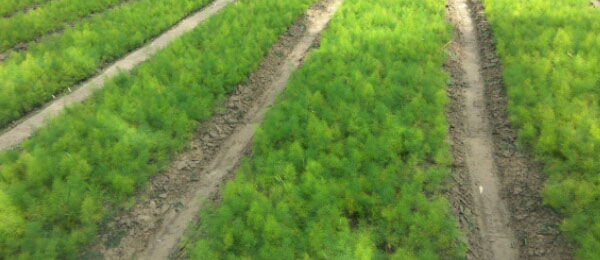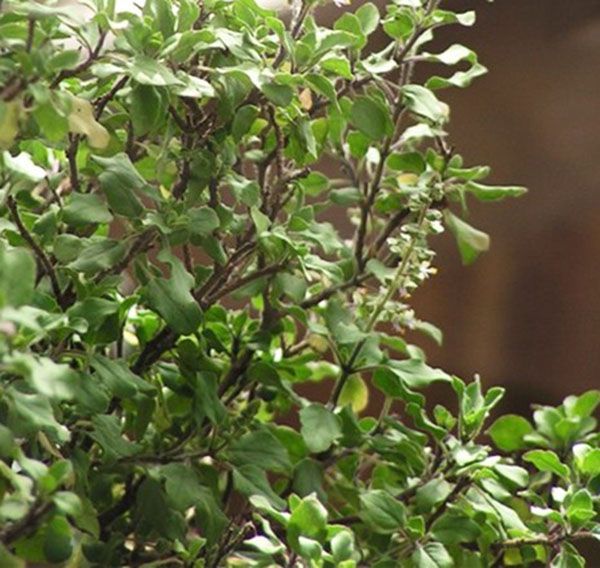Medicinal Project
Leading Wholesaler of Aloe Vera, Stevia, moringa leaves, Ashwagandha, Shatavari and Tulsi Plants from Bangalore.
| Business Type | Supplier |
| Click Here to View Catalogue |
ALOEVERA (GUAR PATHA)
Aloe Vera is a medicinal plant with grows 2ft high on yearly basis. Aloevera is stem less or very short stemmed plant, which grows 24-40 inches high and the leaves are about 4inches wide. The leaves are thick and fleshy and green to grey in color. The leaves are peeled and there’s a viscous liquid is found. (Ssp group) The Aloevera leaves are also used in making of pickles, vegetables, chyawanprash etc. The margin of the leaf is serrated and has small white teeth/ thorns. It is MEDICINAL PLANT.
ALOEVERA VARIETY : Aloebarbadensis miller.
USES
In ayurveda, Aloevera is a natural coolant herb. Bitter-sweet in taste, produces purgative effect. It is used in the treatment of bloating, constipation, gastritis, and fever with Kapha dominance and respiratory problems. It is extensively used in liver and spleen disorders. Aloevera is also used in the treatment of burns, boils. It calms pita, detoxifies blood and is very useful in many skin diseases. It is good for eye power, it is natural detoxifier. Aloevera is a good anti aging herb. It is good for hair, when used in the form of Aloevera hair gel. Aloevera flowers balance Vata and Pita. They are also useful in intestinal worms.
CULTIVATION
Aloevera is a very low maintenance plant, it doesn’t evening require pesticides or manure. Aloe is grown in warm tropical areas and cannot survive freezing temperature. Once it is planted then you get yield for next 5yrs. (Ssp group)
Aloe Vera can be cultivated on any soil for ‘dry land management’, sandy loamy soil is the best suited for it. It is grown almost all parts of India, even under constant drought conditions. However, the crop grows
Well in entire tropical and sub-tropical regions. Since its water requirement is very low, it is best suited for cultivation in Arid and semiarid region especially in Rajasthan, Gujarat, M.P and Maharashtra.
It is grown successfully in marginal to sub marginal soils having low fertility. However, it is observed that its growth was faster under medium fertile heavier soils. (Ssp group) Though, well drained loam to coarse sandy loam soils with moderate fertility and pH up to 8.5 are preferred for its commercial cultivation.
SPECIES
Aloebarbadensis is the most common specie of Aloevera and grown in Rajasthan, M.P, U.P and Gujarat.
MARKETING
Aloe Vera demand is immense therefore marketing it is not difficult. Wet Aloevera leaves are brought by many Ayurvedic Pharmaceuticals companies. Our company also provides the facility of Buy Back agreement.
HARVESTING
Within first year of cultivation, Aloevera leaves can be harvested. Leaving aside 3 leaves rest other leaves can be cut using sharp hears. Generally
SERVICES
- Aloevera growing first harvesting practical training.
- First production starts in 12 month. Then second production starts in 6 – 6 months.
- Plantation cost is to be borne only once and then for next 5 yrs yield can be extracted.
- This includes Supervision, consultancy, guidance, Transportation cost first year.
- Buy back of Agreement of Aloe Vera.
TERMS AND CONDITIONS OF COMPANY
- For 1 Acre plantation the cost of plant is Rs.52, 000/-, out of which 50% i.e. Rs 26, 000/- has to be paid before the cultivation and the remaining half after the planting is done.
- The Buy Back Agreement Stamp paper of Rs.100/- has to be stamped by District Court of your area. (Ssp group)
- For 10 Acre or more yield the buy Back Agreement Stamp Paper will be of Rs.500/-
| Business Type | Supplier |
INTRODUCTION
Stevia leaves have functional and sensory properties superior to those of many other high potency sweeteners. Stevia is likely to become a major source of high potency sweetener for the growing natural food market in the future. Although Stevia can be helpful to anyone, there are certain groups who are more likely to benefit from its remarkable sweetening potential. These include diabetics, those interested in decreasing caloric intake, and children. (Ssp group)
ALOEVERA VARIETY : Aloebarbadensis miller.
PLANT DESCRIPTION:
Stevia rebaudiana is a small perennial growing up to 65-80 cm tall, with sessile, oppositely arranged leaves. Different species of Stevia contain several potential sweetening compounds, with Stevia rebaudiana being the sweetest of all. Stevia is a semi-humid subtropical plant that can be grown easily like any other vegetable crop even in the kitchen garden. The soil should be in the pH range of 6.5- 7.5; well-drained red soil and sandy loam soil.
DISTRIBUTION
Stevia is been successfully cultivated in the recent years at many areas of Rajasthan, Maharashtra, Kerala, Tamil Nadu and Orissa. (Ssp group) The increasing demands for natural sweeteners have driven the farmers in India for Stevia cultivation in large scale.
CHEMICAL COMPOSITION
Diterpene Glycoside is the group of natural sweeteners that have been extracted from Stevia. The leaves of wild Stevia plants contain 0.3 % dulcoside, 0.6% rebaudioside C, 3.8rebaudiosideA and 9.1 % Steviosides.
USES OF STEVIA
Stevia is safe for diabetics, as it does, not affect blood sugar levels. Stevia does not have the neurological or renal side effects of some of the artificial sweeteners. Stevia possess anti-fungal and anti-bacterial property also in addition to its other versatile uses. It can be safely used in herbal medicines, tonics for diabetic patients and
Also in the daily usage products like mouthwashes, and tooth pastes. Mild Stevia leaf tea offers excellent relief for an upset stomach Brief Investment:
100 kg of Stevia extract can be processed into 8-12 kg of final product (white sugar) which is 8-12%, the final product is called Steviosides"
SERVICES
- Stevia growing first harvesting practical training.
- First production starts in 4 month.
- Plantation cost is to be borne only once and then for next 5 yrs yield can be extracted.
- This includes Supervision, consultancy, guidance, Transportation cost first year.
- Buy back of Agreement of Stevia dry leaf. (Ssp group)
TERMS AND CONDITIONS OF COMPANY
- For 1 Acre plantation the cost of Plants Rs. 1,20,000/- out of which 50% i.e. Rs. 60, 000/- has to be paid before the cultivation and the remaining half after the planting is done.
- The Buy Back Agreement Stamp paper of Rs.100/- has to be stamped by District Court of your area.
- For 10 Acre or more yield the buy Back Agreement Stamp Paper will be of Rs.500/-.
| Business Type | Supplier |
PLANTING
The seeds of annual moringa may be directly dibbled in the pit to ensure accelerated and faster growth of the seedlings. The best suited season for sowing the seeds is September under Southern Indian conditions. The time of sowing has to be strictly adhered to because the flowering phase should not coincide with monsoon seasons, which results in heavy Flower shedding. (Ssp group)
MORINGA VARIETY: Country seeds
IRRIGATION
Growing moringa plants may not require watering except during hot weather when they may be irrigated once a week. Annual moringa responds well to irrigation and the yield can be doubled (vegetable moringa fruit) by drip Irrigation as compared to rain-fed crops, drip irrigation at the rate of 4 lit/day can enhance yields by 57 per cent as compared to rain-fed crop. (Ssp group)
FERTILIZER
Moringa trees are generally grown successfully without fertilizers. Southern India, ring trenches are dug about 10 cm from trees during the rainy season and filled with green leaves, manure and ash, and then covered with soil. This is said to promote higher fruit yields if fertilizers are applied, the crop requires 44:16:30 g NPK/ tree at the time of pinching (75 days after sowing). Nitrogen @ 44g / tree must be applied as top dressing at first flowering (150-160 days after sowing). (Ssp group)
PEST AND DISEASES
Developing fruit are damaged by the fruit fly Gerona distigma which can be effectively managed by adopting Integrated pest management (IPM) measures. No major disease in India has been reported as affecting the economics of the crop
RATOONING
Annual moringa, when the harvest is in, the trees are cut down to a height of one meter above ground level for ratooning. These ratoon plants develop new shoots and start bearing four or five months after ratooning. During each ratooning operation, the plants are supplied with the recommended level of n, p and k nutrients along with 20-35 kg of fym.
HARVEST AND YIELD
Annual moringa types are seasonal in terms of fruit- bearing and the crop sown during September comes to harvest within six months. Fruit of sufficient length and girth are harvested before they develop fiber. The harvest period extends for 2-3 months and each tree bears 250-400 fruit depending on the type.
SERVICES
- This includes Supervision, consultancy, guidance, Transportation cost first year.
- First production starts in 4 month.
- Plantation cost is to be borne only once and then for next 5 yrs yield can be extracted.
- Moringa leaf growing first harvesting practical training.
- 5. Buy back Agreement of Moringa leaf.
TERMS AND CONDITIONS OF COMPANY
- For 1 Acre plantation the total cost of seeds Rs. 56,000/- will pay in advance before the cultivation.(Ssp group)
- The Buy Back Agreement Stamp paper of Rs.100/- has to be stamped by District Court of your area.
- For 10 Acre or more yield the buy Back Agreement Stamp Paper will be of Rs.500/-.
| Business Type | Supplier |
ASHWAGANDHA CULTIVATION
Ashwagandha is a plant that grows mostly in India, Pakistan and North America. The root base of the ashwagandha herb has been applied for centuries in Ayurvedic medicine. Ashwagandha has many positive effects on human health, such as flavonoids and elements of the with anolide class. Several today's studies have found that ashwagandha is efficient in lowering inflammation, reducing stress, improving mental activity, energizing the body, as a healthy antioxidant and it may also cure tumors.
VAREITY : Withaniasomnifera Dunal
USES
- It is an Ancient Medicinal Herb.
- It Can Reduce Blood Sugar Levels.
- It Has Anti-Cancer Properties.
- It Can Reduce Cortisol Levels.
- It May Help Reduce Stress and Anxiety.
- It May Reduce Symptoms of Depression.
CULTIVATION
Ashwagandha grows well in sandy loam or light red soil, having pH 7.5-8.0 with good drainage. It can be cultivated between 600-1200 m altitudes. The semi-tropical areas receiving 500-750 mm rainfall are suitable for cultivation of this rained crop. The crop requires dry season during its growing period. Temperature between 200C to 350C is most suitable for cultivation. Late winter rains are conducive for the proper development of the plant roots.
SPECIES
WITHANIA SOMNIFERA (Ashwagandha) is usually grown in fields which are not well covered by the irrigation systems. The field on which food crops cannot be taken profitably for the above reason may be used for Ashwagandha cultivation. The soil of the field selected for Ashwagandha cultivation is well pulverized by ploughing, disking and/or harrowing. The field may be then leveled by the application pate.
MARKETING
Ashwagandha demand is immense therefore marketing it is not difficult. Ashwagandha are brought by many people in market. Our company also provides the facility of Buy Back agreement.
HARVESTING
The plants start flowering and bearing fruits from December onwards. The crop is ready for harvest in January-March at 150 to 180 days after sowing. The maturity of crop is judged by drying out of leaves and yellow red berries. The entire plant is uprooted for roots which are separated from aerial parts by cutting the stem 1-2 cm above the crown. The roots are then either cut transversely into small pieces (7 to 10 cm) or dried as it is in the sun. About 650-800 kg roots can be obtained from 1ha on drying it comes to 350-435 kg. Berries are hand plucked separately. They are dried and crushed to take out the seeds.
SERVICES
- Ashwagandha growing first harvesting practical training.
- This includes Supervision, consultancy, guidance, Transportation cost first year.
- Plantation cost is to be borne only once.
- Buy back Agreement of Ashwagandha seeds and dry roots.
- Production in 6th month and only one time production. (6th month plant life)
- Sowing time for Ashwagandha “June to July”.
TERMS AND CONDITIONS OF COMPANY
- For 1 Acre plantation cost of seeds kit is Rs.8,000 /- , which is pay in advance before the cultivation.
- The Buy Back Agreement Stamp paper of Rs.100/- has to be stamped by District Court of your area.
- For 10 Acre or more yield the buy Back Agreement Stamp Paper will be of Rs.500/-.
| Business Type | Supplier |
CULTIVATION
Satavar is common throughout the tropical and subtropical regions, particularly central India. It is also found up to an altitude of 1500 m in subtropical Himalayas. By nature, the plant is xerophytic and prefers the semi-arid to subtropical, cool environment.(Ssp group)
CLIMATE AND SOIL
Soil – black, well drained and fertile soil is good for cultivation. But can be cultivated in loose and medium black soil. Climate- crop responses well to tropical and hot climate The plant prefers annual average rainfall of 600–1000 mm or less, of which 85% is received during July to September. A well-drained fertile sandy-loam to medium black soil, with a pH of 6–8 is best suited for its cultivation with staking support. Satavar can be grown in open land as well as under shade, but very high moisture levels result in rotting of root.
PROPAGATION MATERIAL
Both seeds and root stumps can be used for propagation. (Ssp group) However, seeds are preferable on account of high production that makes up for low germination percentage in cultivation. Seeds may be collected from March to May when their color changes from red to black.
AGRO-TECHNIQUE
RAISING PROPAGULES
Seeds are sown during the April -may in well-prepared and raised nursery beds containing good amount of FYM (farmyard manure). The beds should ideally be 10 m × 1m in size. Seeds are sown in lines 5 cm apart and covered with a mixture of FYM and soil. The beds are lightly watered at regular intervals using a rose water cane. (Ssp group)
PROPAGULES RATE AND PRE-TREATMENT
About 7 kg of seeds are required for raising seedlings for 1 hectare of crop. To obtain early and higher germination percentage, presoaking in water is required. Higher germination is also achieved by soaking the seeds in cow urine for 24 hours. The germination commences after 20 days of sowing and is completed in 30 days.
PLANTING
LAND PREPARATION AND FERTILIZER
The land should be given a deep disc plugging, followed by harrowing and leveling. The field is normally divided into plots, keeping one irrigation channel in between two rows of plots. About 10 tones of well-decomposed FYM are thoroughly mixed in the soil one month before transplanting. Shatavar. A fertilizer dose of 40 kg nitrogen, 20 kg phosphate, and 20 kg potash per hectare may be applied for better growth and higher tuberous root yield. One-third of nitrogen and entire dose of phosphate and potash should be placed 10–12 cm deep in the rows before transplanting
TRANSPLANTING AND OPTIMUM SPACING
The seedlings are ready for transplanting after 50-60 days of sowing. These are transplanted in field at the onset of monsoon in July. (Ssp group) Keeping the plant-to-plant distance at 60 cm. Optimum number of seedlings required per hectare using the recommended spacing is about 150000.
INTERCROPPING SYSTEM
Satavar is normally grown as a monocrop, but it can be grown in inter spaces available in orchards having low light interception. Plants need staking material, thus poles or shrubs serve for support.
IRRIGATION AND INTERCROPPING
- The field is irrigated immediately after planting if there are no rains for 2-3 days.
- Satavar can be grown in rain-fed condition as well as irrigated. (Ssp group)
- On availability of irrigation water irrigation at the interval of 25-30 days may be given.
- Frequent weeding is required during its early period of growth.
- Care should be taken to avoid any damage to growing shoots at the time of weeding. Totally, about 2-3 hand weeding is needed to keep crop free of weeds.
INTERCULTURAL AND MAINTENANCE PRACTICES
The balance two-third N is applied in two equal split doses during September and in late February. The fertilizer is broadcast in between the rows and mixed in soil Followed by irrigation, if the soil is dry. Satavar initially grows slowly for 60 days, which keeps inter-row space virtually vacant, allowing easy weed growth. It is necessary to carry out weeding and hoeing operations to keep the field free from weeds for initial two-month period. (Ssp group) After two months, Satavar grows enough to cover the inter row spaces and prevents weed growth.
DISEASE AND PEST CONTROL
No serious insects, pests, and disease have been reported in this crop.
PLANT PROTECTION
No serious pest and disease has been noticed in this crop
HARVESTING
CROP MATURITY & HARVESTING
The crop matures in 18 months after planting. Rabi season, that is, November– December, is the best time for harvesting tuberous roots when the above-ground parts start turning pale yellow. The crop, when harvested in 18 months, yields about 4–5 tones/hectare, while harvesting after 20 months yields about 6tones/hectare of tubers along with 35 kg hectare of seeds.
YIELD & COST OF CULTIVATION
The tuberous root yields 15%–20% of dry matter after removal of outer wall. An average shade-dried tuberous root yield of 4-5 tons per hectare is obtained from 18-month-old plants under experimental conditions. Including land preparation, nursery rising, cost of planting material, FYM, cost of transplanting, harvesting, peeling and processing for market, and so on. (Ssp group) The calculated yield of 18- month-old crop of Satavar is 4-5 tones/hectare, which can fetch net returns of approximately Rs 1-1.25 laces/hectare.
POST HARVESTING
The harvested toots are thoroughly washed preferably in flowing water, Thereafter, inner woody threads are removed by splitting the roots. The thin root barks are removed by scraping with a knife or incising them. In the traditional method, the roots are also kept in a bamboo basket on a pot of boiling water for five to ten minutes to facilitate easy removal of thread and root bark. But this method is really not required when freshly collected roots are peeled off. The roots are then dried in the shade for 8-10 days. The fresh roots lose about 90% of their weight after peeling and drying. In case of delay in peeling, it becomes extremely difficult later on. Value addition of root powder enhances marketability and sale and price. The roots get damaged within 3 to 4 months if threads in not immediately removed.
YIELD
Average yield per acre is 2000 kg dried roots.
SERVICES
- This expenditure is an one-time expenditure and one time production only
- Production starts in 18th month. (Ssp group)
- This includes Supervision, consultancy, guidance, Transportation cost first year.
- Buy back Agreement of Satavar dry roots.
- Satavar growing first harvesting practical training.
TERMS AND CONDITIONS OF COMPANY
- For 1 Acre plantation the cost of Plants is Rs. 90,000/-, out of which 50% i.e. Rs. 45, 000/- has to be paid before the cultivation and the remaining half after the planting is done.
- The Buy Back Agreement Stamp paper of Rs.100/- has to be stamped by District Court of your area.
- For 10 Acre or more yield the buy Back Agreement Stamp Paper will be of Rs.500/-.
| Business Type | Supplier |
TULSI PLANTS
“As a trustworthy supplier, we take pride in presenting our customers with excellent quality Tulsi Plants(basil). Since, we have a widespread supply chain network; we can satisfy buyers by catering to bulk requirements and making delivery within the stipulated time.”
Tulsi or Sacred basil (Ocimum sanctum L.) is a biennial shrub belonging to the family Lamiaceae. The plant has been revered by the people of India for its multivarious uses since vedic times. Even now, it is worshipped by many. The essential oil of sacred basil has about 71 per cent eugenol and is comparable to that of clove oil. Eugenol is widely used in perfumery, cosmetics, pharmaceuticals and confectionary industries. The juice of the leaves possesses antiseptic, diaphoretic, antiperiodic, stimulating, expectorant, anti-pyretic and memory improving properties. It is one among the few plants which purifies the atmosphere. (Ssp group)
TULSI VARIETIES: Green (Sri Tulsi) and Purple (Krishna Tulsi) is under cultivation.
SOILS
The plant is sufficiently hardy and it can be grown on any type of soil except the ones with highly saline, alkaline or water logged conditions. However, sandy loam soil with good organic matter is considered ideal.
CLIMATE
The crop has a wide adaptability and can be grown successfully in tropical and sub-tropical climates. Long days with high temperature have been found favorable for plant growth and oil production. (Ssp group)
CULTIVATION
PROPAGATION
The crop can be propagated either through seeds or cuttings.
NURSERY RISING
For propagating basil through seeds, they are to be sown in the nursery beds. The nursery should be located preferably in partial shade with adequate irrigation facilities. Soil is worked up to a depth of about 30 cm. Well rotten farm yard manure (2 kg/sq.m) is applied to the soil and prepared to a fine tilth and seed beds of 4.5x1.0x0.2 m size are prepared. As the seeds are minute, the required quantity of seeds are mixed with sand in the ratio of 1:4 and sown in nursery bed, 2 months in advance of the onset of monsoon.
They germinate in 8-12 days and seedlings are ready for transplanting in about 6 weeks time at 4-5 leaf stage.
VEGETATIVE PROPAGATION
Vegetatively it can be propagated by terminal cuttings with about 90-100 per cent success during October-December months. For this purpose, cuttings with 8-10 nodes and 10-15 cm length are used. They are so prepared that except for the first 2-3 pairs of leaves the rest are trimmed off. Later, they are planted in the well prepared nursery beds or polythene bags. In about 4-6 weeks time the rooting is complete and they are ready for transplanting into the main field. The plants are transplanted at a spacing of 40 cm between the row and 40 cm within the row.
IRRIGATION AND INTERCULTURAL
After transplanting irrigation is provided twice a week till one month so that the plants establish themselves well. (Ssp group) Later, it is given at weekly interval depending upon the rainfall and soil moisture status.
The first weeding is done one month after planting and the second after another 30 days. Afterwards, no further weeding is required as the plants become bushy and cover the soil and thereby smother the weeds. However, after each harvest, weeding should be done so as to avoid weed growth in the interspaces, if any.
PLANT PROTECTION
- Major insects: Leaf rollers
- Major diseases: Powdery mildew, seedling blight, root-rot
SCHEDULE
- Spray the crop with 0.2% Malathion or 0.1% methyl parathion to control leaf rollers never noticed.
- To control powdery mildew, spray the crop with 0.3% wettable sulphur.
- Drench the nursery beds with a 0.1 per cent solution of mercurial fungicide.
- Adopt phytosanitary measures to control the seedling blight and root rot. (Ssp group)
HARVESTING AND YIELD
- The crop is harvested at full bloom stage by cutting the plants at 15 cm from ground level to ensure good regeneration for further harvests. The first harvest is done after 90 days of planting and subsequently it may be harvested at every 75 days interval. Harvest the crop on bright sunny days to get good yield and oil quality.
- On an average, basil gives about 10,000-15,000 kg of fresh herbage per hectare per year. As the herb contains about 0.1 to 0.23 per cent oil, commensurate to it we may obtain about 10-23 liters of essential oil per hectare.
SERVICES
- This expenditure is an one-time expenditure and one time production.
- This includes Supervision, consultancy, guidance, Transportation cost first year.
- Buy back agreement of Tulsi. (Ssp group)
- Tulsi growing first harvesting practical training.
- Buy back Agreement of Tulsi.
TERMS AND CONDITIONS OF COMPANY
- For 1 Acre plantation the cost of seeds kit Rs. 3500/- will pay in advance before the cultivation.
- The Buy Back Agreement Stamp paper of Rs.100/- has to be stamped by District Court of your area
- For 10 Acre or more yield the buy Back Agreement Stamp Paper will be of Rs.500/-.


